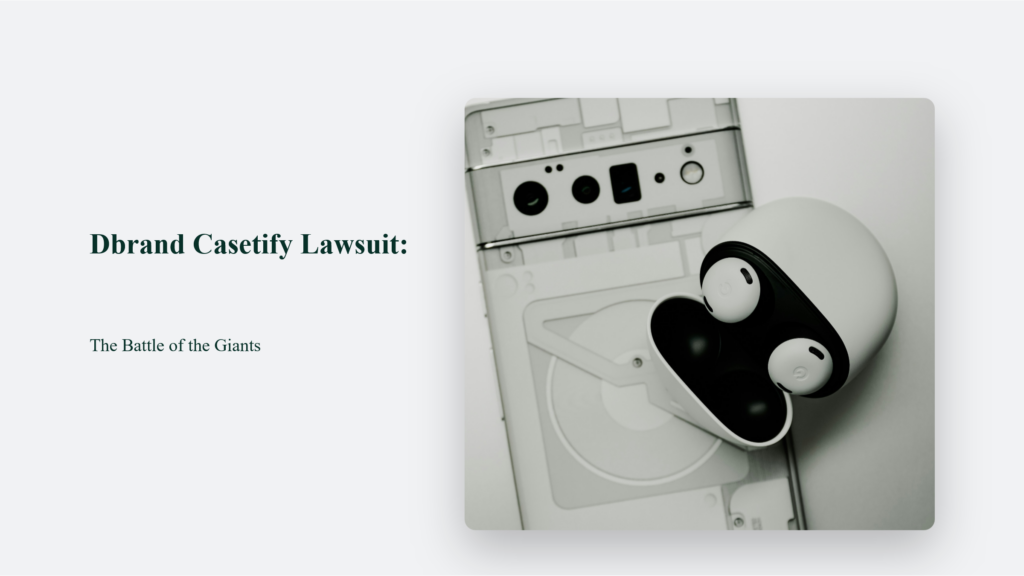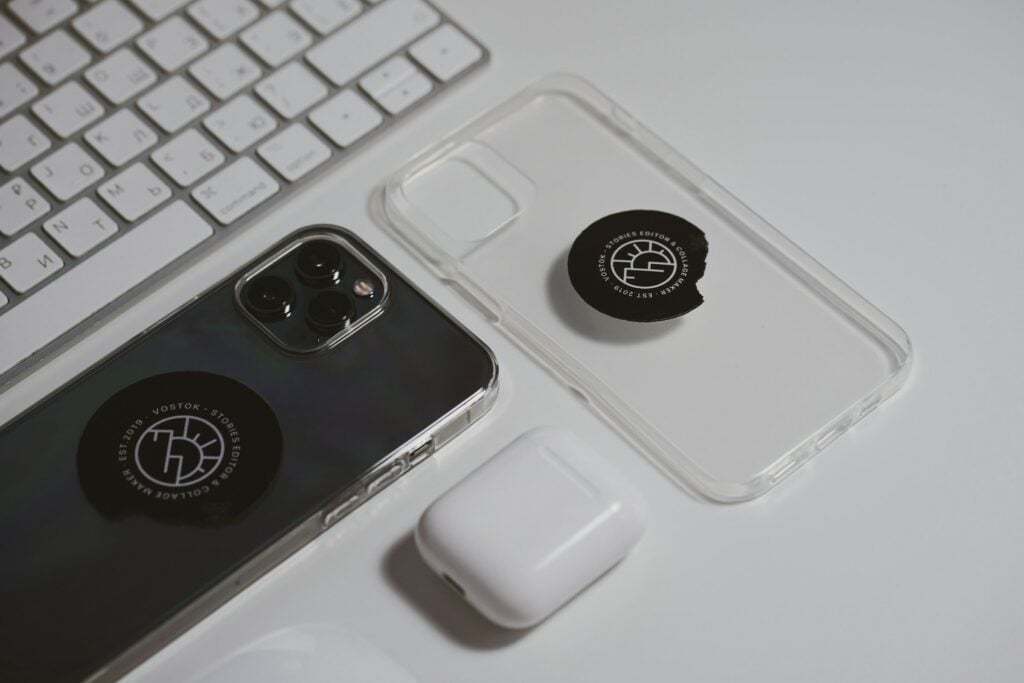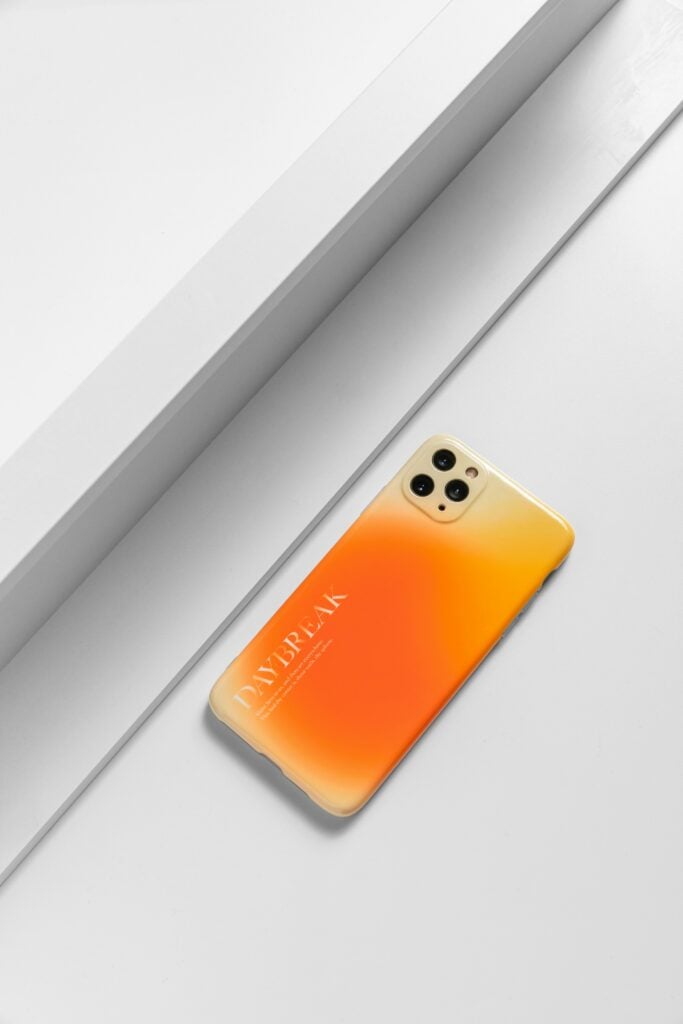In the digital age, where innovation meets creativity, the Dbrand Casetify lawsuit has sparked a fiery debate in the tech accessory industry. This case is not just about two companies but symbolises a larger conversation on intellectual property, creativity, and the fine line between inspiration and imitation.

Key Takeaway: Navigating the Fine Line
The crux of this legal battle underscores a crucial lesson for businesses and creatives: respecting intellectual property rights while navigating the fine line between being inspired by and copying someone else’s work. This delicate balance requires not just legal acumen but also ethical consideration.
Dbrand Casetify Lawsuit:
The heart of the legal dispute between Dbrand and Casetify centres on allegations of intellectual property theft. Dbrand, a company renowned for its innovative gadget skins, collaborated with popular YouTuber Zack Nelson, known as JerryRigEverything, to create the “Teardown” series in 2019.
This series was particularly noted for its creative approach to design, showcasing the internal components of devices in a way that was both aesthetically pleasing and intriguing to tech enthusiasts. The Teardown series quickly gained popularity for its unique perspective on aesthetics, merging functionality with a peek into the device’s inner workings.
The controversy escalated when Dbrand accused Casetify, a competitor for gadget cases and skins, of copying their Teardown designs. Dbrand’s allegations pointed to Casetify’s “Inside Out” line, highlighting striking similarities to their products.
Dbrand’s evidence to support its claims included matching Easter eggs and specific phrases unique to the Teardown series, elements that Dbrand argued were unmistakably replicated in Casetify’s products.
These Easter eggs and phrases, designed to be hidden or subtle nods to the collaboration and the product’s design intricacies, clearly indicate Dbrand’s alleged intellectual property theft.
This dispute illuminates the broader issues surrounding intellectual property rights and the fine line between drawing inspiration from existing designs and outright copying them.
As Dbrand pointed out, Casetify’s products include specific Easter eggs and unique phrases, which raises questions about the originality of design and the ethical considerations companies must navigate in a highly competitive market.
The legal battle between Dbrand and Casetify symbolises the challenges creators and innovators face in protecting their work while fostering a culture of creativity and advancement in the tech accessory industry.
Casetify’s Defense:
Amid the legal tussle between Dbrand and Casetify over alleged design theft, Casetify’s defence strategy underscores its commitment to originality and proactive measures in response to the accusations.
Casetify’s Stance on Originality
Casetify has publicly responded to the allegations by reiterating its dedication to being a “bastion of originality.” The company has expressed pride in its history of creating unique designs and products that resonate with its customer base. This defence is pivotal, highlighting Casetify’s attempt to distance itself from any notions of imitative practices and to reinforce its brand identity as an innovator in the market.
Immediate Actions Taken
In a direct response to the allegations and pending a thorough investigation, Casetify removed the contested designs from its website. This action indicates Casetify’s willingness to address the concerns raised by Dbrand and mitigate any potential legal repercussions.
Furthermore, the company has investigated the copyright allegations, suggesting a comprehensive approach to resolving the dispute and ensuring compliance with intellectual property laws.
Addressing the Public and Customer Concerns
Casetify’s public communications have emphasised its ongoing investigation into the matter and its commitment to maintaining the integrity of its design process. By acknowledging the situation and taking visible actions, Casetify aims to preserve its reputation and reassure its customer base of its dedication to originality and legal compliance. The removal of the disputed designs and the investigation into the copyright claims serve as a testament to Casetify’s proactive stance in addressing the controversy.
Legal and Ethical Considerations
Casetify’s defence and subsequent actions reflect the complex interplay between legal obligations and ethical business practices in intellectual property. By responding promptly to the allegations, Casetify adheres to legal standards and engages in ethical business practices, prioritising the resolution of potential intellectual property infringements.
This approach underscores the importance of transparency and accountability in the highly competitive tech accessory industry.

A Closer Look at Creativity vs. Copying
The Dbrand vs. Casetify lawsuit is a case study in the ongoing debate over what constitutes inspiration versus outright copying. It’s a dialogue that stretches far beyond the courtrooms, touching on the essence of creativity in the tech industry. At what point does a homage become a theft? This question remains central to the discourse surrounding this case.
This legal skirmish between Dbrand and Casetify is not just a dispute over designs but a reflection of the ongoing struggle to define and protect creativity in the digital age. As the case unfolds, it will undoubtedly provide further fodder for discussion on the rights of creators and the ethics of inspiration in the tech world.
Frequently Asked Questions:
What sparked the lawsuit between Dbrand and Casetify?
Dbrand filed a lawsuit against Casetify, alleging that Casetify copied their Teardown designs, created in collaboration with JerryRigEverything.
How did Dbrand discover the alleged infringement?
Dbrand identified similarities between their designs and Casetify’s products, including specific Easter eggs and phrases unique to their Teardown series.
What was Casetify’s response to the allegations?
Casetify stated they pride themselves on originality and have removed the questioned designs from their platform pending an investigation.


![The ‘Giveaway Piggy Back Scam’ In Full Swing [2022]](https://www.cjco.com.au/wp-content/uploads/pexels-nataliya-vaitkevich-7172791-1-scaled-2-683x1024.jpg)

